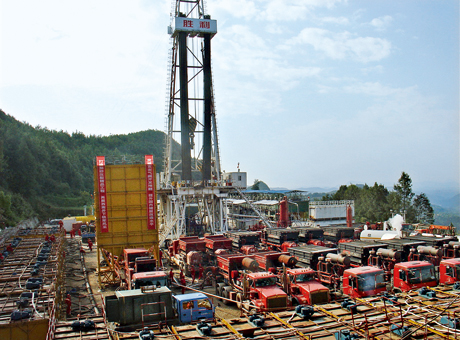
China’s unconventional gas production: slow but steady progress
Natural gas is set to play an important role in China’s switch away from coal. Last year, gas consumption reached 185 billion cubic metres (bcm), or just over 6% of total primary energy consumption. Of this, 30% was imported, as LNG through coastal ports and by pipeline from Central Asia, as well as a small amount via the newly-commissioned pipeline from Myanmar. Some 25% of the 126 bcm of domestically gas production came from the longstanding unconventional source known as ‘tight gas’, mainly from the Ordos Basin of north China. Three other sources of unconventional gas, namely coal-bed methane (CBM), shale gas and synthetic natural gas (SNG) provided only about 6 bcm in 2014.
After more than 25 years of exploration and development CBM continues to disappoint. Difficult reservoirs and structural complexity have posed severe technical challenges, whilst the fiscal incentives have not been as attractive as those for shale gas. Independent foreign companies have been further discouraged by complex and time-consuming bureaucratic procedures. CBM production rose from 2.9 bcm in 2013 to 3.7 bcm in 2014 and is set to reach 4.5 bcm. However, the number of wells drilled in 2014 was about 1,500, much below the nearly 4,000 in 2013. Utilisation continues to be a problem on account of the lack of pipelines. Only 3.2 bcm of the 3.7 bcm of CBM produced was used. The situation with coal-mine methane was much worse with only 33% of the 13 bcm produced put to use.
Exploration for shale gas started in 2005 and has accelerated in the last two years. By the end of 2014, 52 exploration blocks had been awarded, 400 wells drilled, and 1.8 bcm production capacity created. A combination of research, development and operating experience has allowed the Chinese companies to reduce drilling times and costs and to extend the reach of horizontal wells. Wells with a total depth of 5,500 metres and a lateral reach of up to 2 kilometres are now taking 70-90 days to drill instead of one year as in the past for wells well less horizontal reach. Total drilling and completion costs per well are officially reported to be down by more than 30% to as low as US$ 10 million in some cases, though many probably still cost as much as US$15 million. Well-head gas prices are said to be in the range US$9-11 per million BTU (British Thermal Units) which is seen as sufficiently attractive by some companies.
Sinopec and PetroChina are committed to major exploration campaigns, but enthusiasm among other players is more muted. Shell is pressing ahead with development plans for its Fushun-Yongchuan production sharing contract (PSC) with PetroChina, and Hess and Petronas are working together to sign a PSC with PetroChina. Meanwhile, some international majors are deciding not to convert their joint study agreements into PSCs and even the China National Offshore Oil Company (CNOOC) is reported to be abandoning its shale gas campaign.
Progress on blocks awarded in the first and second rounds of bidding continues to be slow for a variety of reasons, including unfavourable geological conditions and the inexperience of the operating companies. In response, the Ministry of Land and Resources has been fined some operators which have failed to meet their commitments.
Last year the National Energy Administration reduced the shale gas output target for the year 2020 from 60-80 bcm to 30 bcm. The target of 6.5 bcm for 2015 remains in place, but confidence that this will be achieved is not universal. Three fundamental above-ground problems which continue to constrain the enthusiasm for shale gas exploration are the hold that PetroChina and Sinopec have over the best resources, the lack of a robust regime for third-party access to gas pipelines, and an ambiguous legal regime for foreign investors which do not partner with one of the two large national oil companies.
To date, companies appear to have managed safety, environmental and societal issues relatively well, but the scale of these challenges will increase dramatically once the number of wells drilled each year rises from 200 to a few thousand, even if each drill pad hosts 6-8 wells. The population density in most of rural Sichuan exceeds 100 people per square kilometre, which compares to less than 30 per square kilometre in some of the US shale gas areas. The transportation of one of the large drilling rigs in China requires 120 truck journeys. With two rigs operating on a single pad, this means that a total of 480 trips are needed to bring in and remove the rigs, let alone the pumping trucks, fracking fluids and other materials and cabins.
Water is generally plentiful in Sichuan and the companies appear to be implementing good practice in handling water and fracking fluids, though the use of open pits for holding waste water may be a cause for concern. However the government has yet to issue any specific regulations concerning the management and composition of fracking fluids, transparency on the composition of these fluids, or engagement with local communities and civil society organisations.
Projects to produce SNG have encountered a number of technical, commercial and environmental obstacles and causing the government to reduce earlier ambitious production targets. The output in 2014 was probably no more than 1 bcm. Of the many published unofficial targets for the year 2020, the most modest is 15 bcm.

